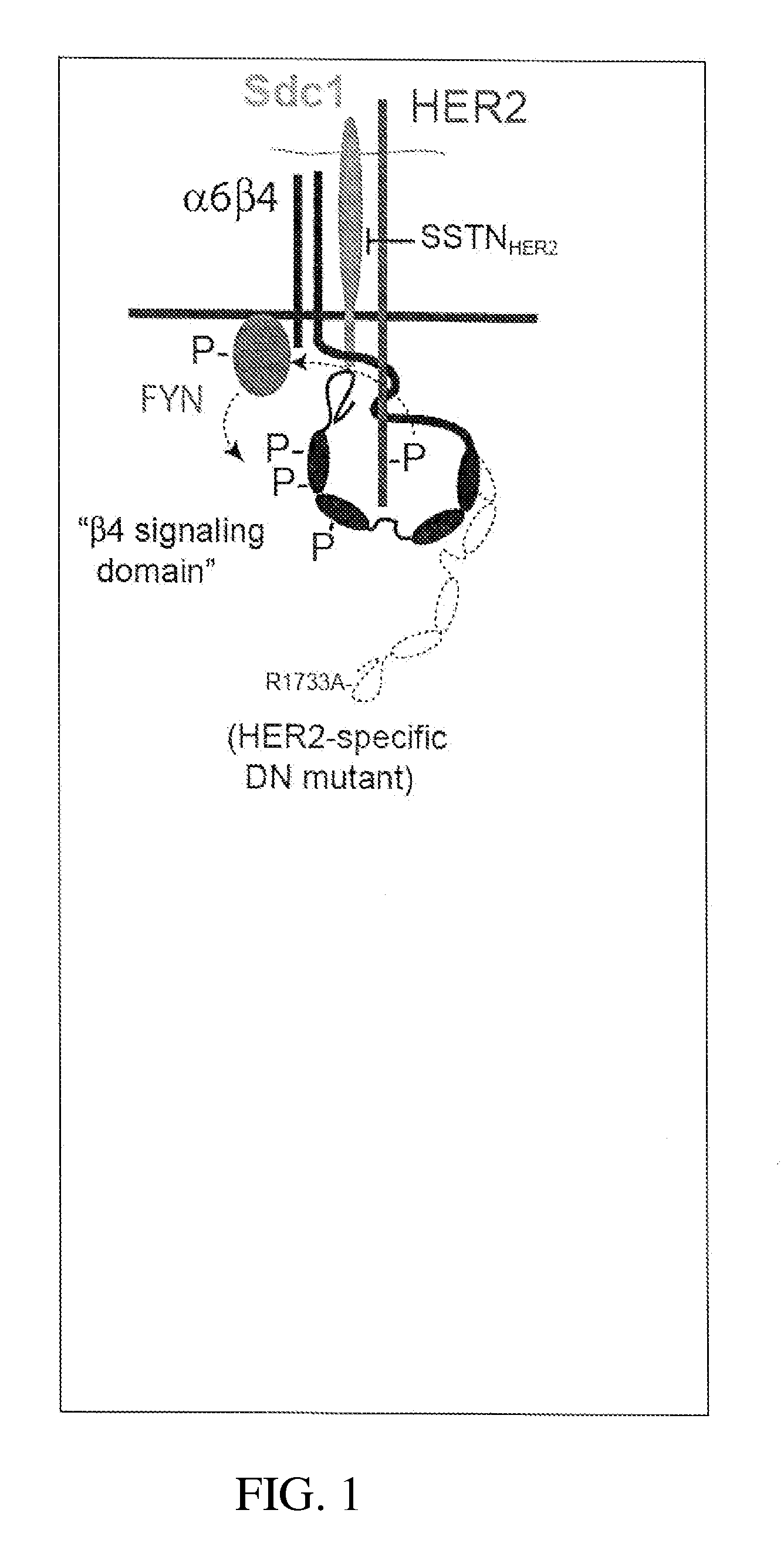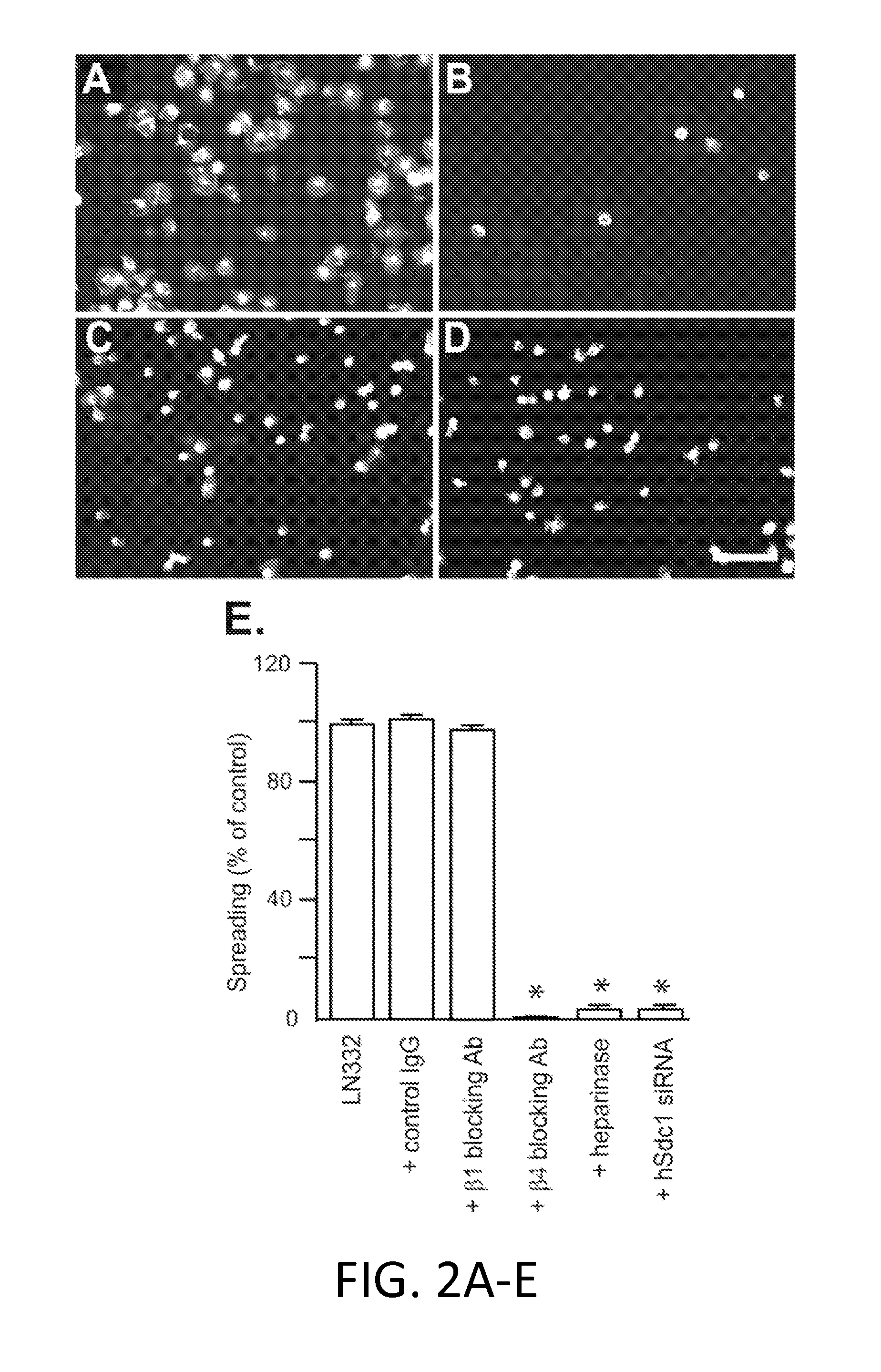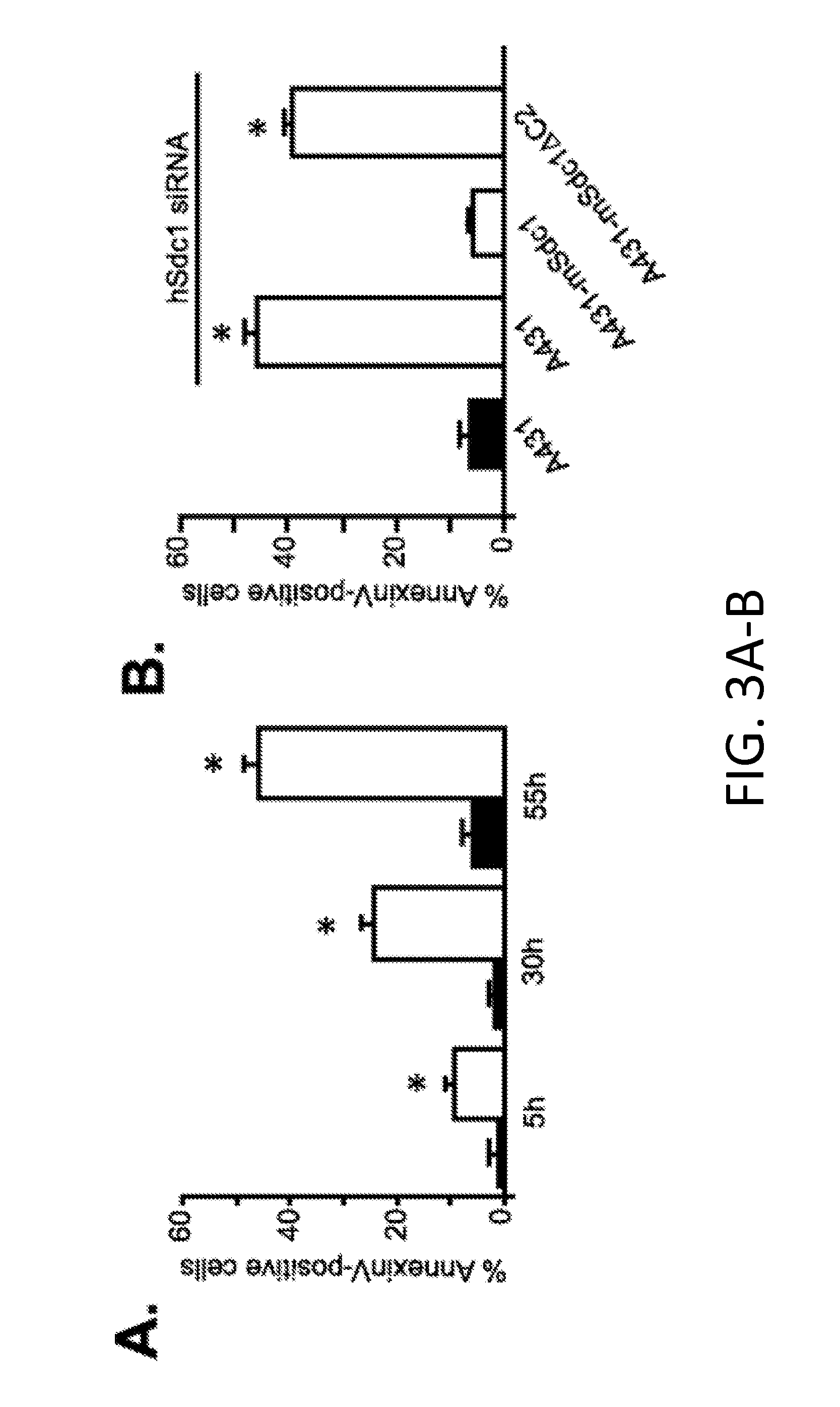Syndecan peptides and polypeptides as inhibitors of cancer
a technology of syndecan and polypeptides, applied in the direction of peptides, peptide/protein ingredients, peptide sources, etc., can solve the problems of poor overall survival, no therapeutics available to target the tumor-promoting activity of these receptors, and the way in which these receptors are coupled remains largely unknown
- Summary
- Abstract
- Description
- Claims
- Application Information
AI Technical Summary
Benefits of technology
Problems solved by technology
Method used
Image
Examples
example 1
Materials and Methods
[0179]Antibodies and Reagents.
[0180]Antibodies used were mouse mAb 3E1 and P1B5 (Chemicon, Temecula, Calif.) against β4 and β1 integrin extracellular domains, respectively; rabbit antibody Ab1922 (Millipore, Billerica, Mass.) to the β4 cytoplasmic domain; rabbit BM165 (provided by Dr. Peter Marinkovich, Stanford University, CA) against laminin α3 chain; anti-penta histidine antibody (Qiagen, Valencia, Calif.) and goat anti-biotin antibody (Vector Laboratories, Burlingame, Calif.). Rat mAb (mAb13) to human integrin 1 was kindly provided by Dr. Steven Akiyama (NIEHS, National Institutes of Health). The inventor used mouse mAbs B-A38 (Accurate Chemical and Scientific, Westbury, N.Y.) and 150.9 (University of Alabama Hybridoma Facility) to human Sdc1 and human Sdc4, respectively and rat mAb 281.2 (Homan et al., 1998) or KY 8.2 (Echtermeyer et al., 2001) against mouse Sdc1 or mouse Sdc4, respectively. HER2 was recognized by anti-c-ErbB-2 Ab-15 (clone 3B5) (Fisher). E...
example 2
Results
[0201]Sdc1 Engages the Cytoplasmic Domain of the β4 Integrin.
[0202]Syndecan-1 (Sdc1) is typically expressed on epithelial cells and is the most abundant epithelial syndecan. This is particularly true for keratinocytes, which express as much Sdc1 as any cell that the inventor has examined. For this reason, the inventor turned to keratinocytes when the inventor was looking for new Sdc1 binding partners. He initiated a yeast two-hybrid screen in which the Sdc1 cytoplasmic domain was used as bait to screen a cDNA library constructed from human keratinocyte mRNA. The screen identified a cDNA clone encoding a partial fragment (C-terminus) of the β4 integrin cytoplasmic domain. The β4 integrin assembles only with the α6 integrin subunit, forming the α6β4 integrin expressed by epithelial cells to bind LN332. The cDNA clone that contains the syndecan binding site encodes amino acids 1473-1752 (roughly the distal third of the cytoplasmic domain) (Wang et al., 2010). It is also interest...
example 3
Discussion
[0222]Epithelial cells rely on the α6β4 integrin to form hemidesmosomes, anchoring the epithelial layer to the ECM and helping it to resist frictional forces. However, during wound healing, or in transformed epithelia overexpressing the HER2, the hemidesmosomes break down in response to HER2 signaling and the free integrin associates with the HER2. HER2 causes phosphorylation of the β4 subunit in its signaling domain, leading to cell proliferation, survival and invasion. The inventor's current work shows that this mechanism relies on association of the integrin with HER2 and Sdc1. Sdc1 engages the cytoplasmic domain of the integrin, ostensibly bringing it to the membrane where it becomes phosphorylated (Wang et al., 2010). But a site in the extracellular domain of Sdc1 is also essential and appears responsible for capturing α6β4 integrin and EGFR as a signaling complex. Competition with either full-length Sdc1 ectodomain expressed as a recombinant protein, or competition w...
PUM
 Login to View More
Login to View More Abstract
Description
Claims
Application Information
 Login to View More
Login to View More - R&D
- Intellectual Property
- Life Sciences
- Materials
- Tech Scout
- Unparalleled Data Quality
- Higher Quality Content
- 60% Fewer Hallucinations
Browse by: Latest US Patents, China's latest patents, Technical Efficacy Thesaurus, Application Domain, Technology Topic, Popular Technical Reports.
© 2025 PatSnap. All rights reserved.Legal|Privacy policy|Modern Slavery Act Transparency Statement|Sitemap|About US| Contact US: help@patsnap.com



